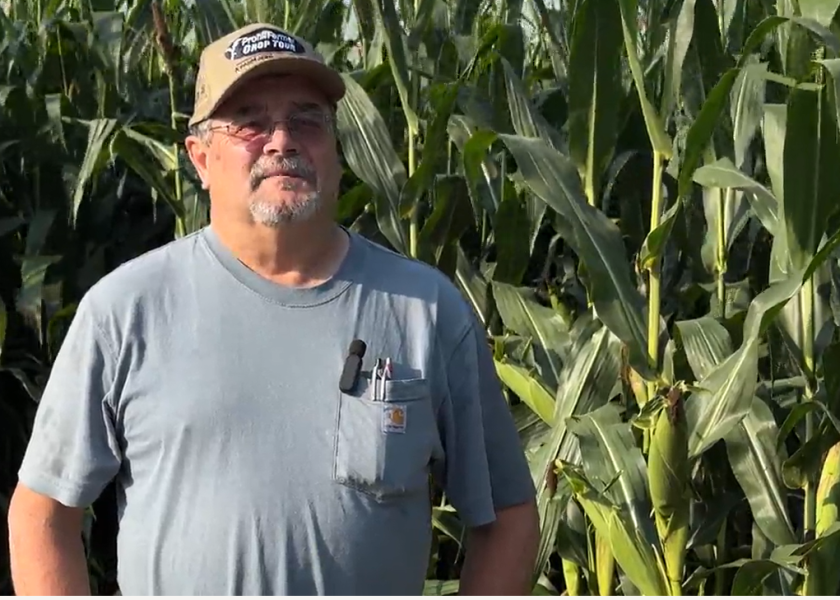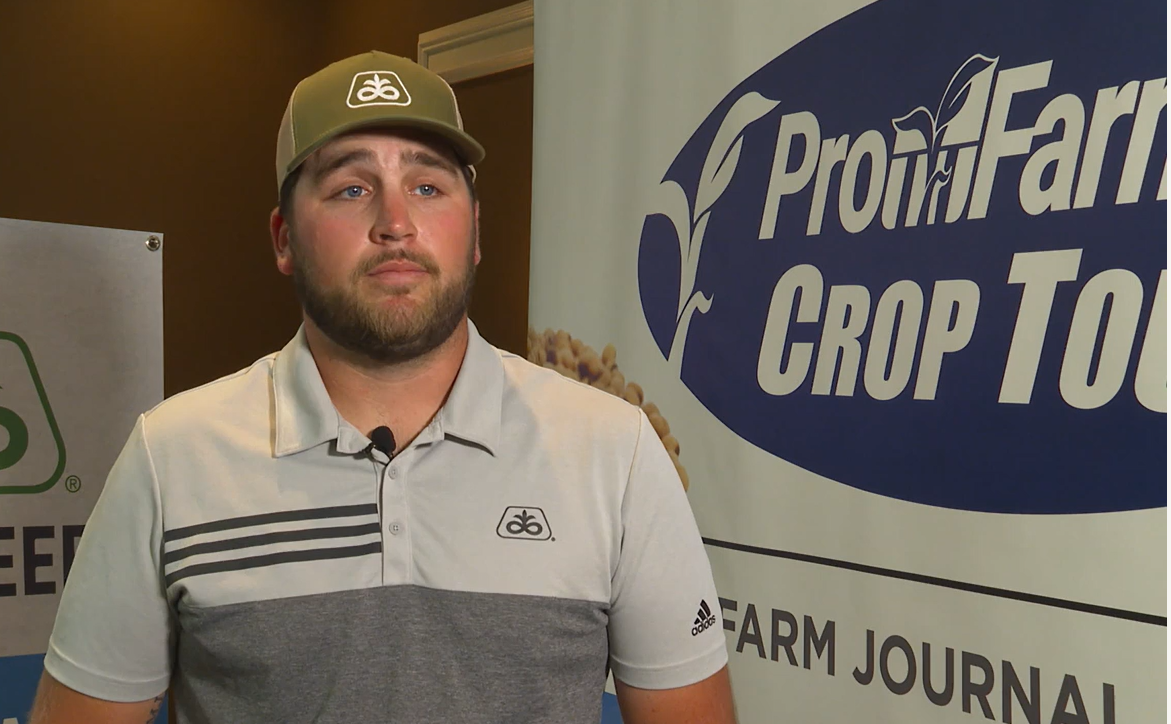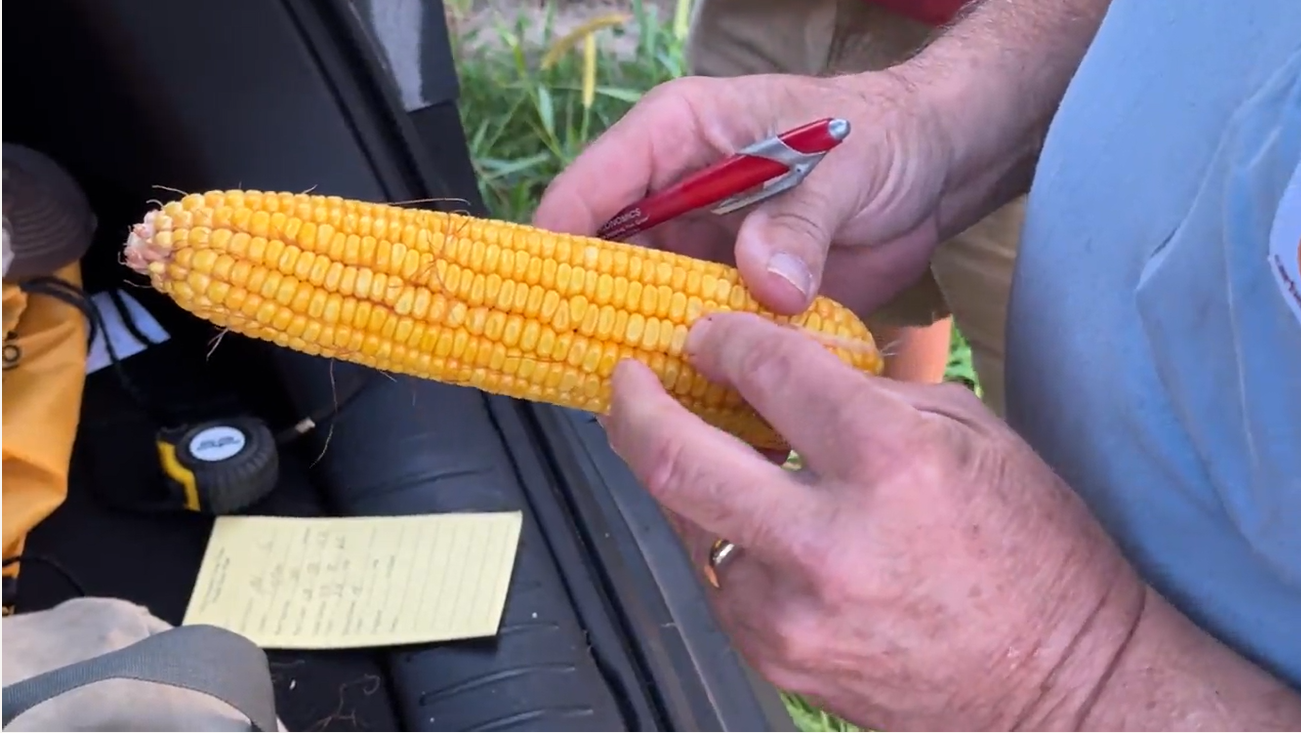'No Monster Yields' but Nebraska Irrigated Corn has Above-Average Potential

It was a crop-withering 105 degrees F with a hot wind blowing when Pro Farmer Crop Tour scouts on the western leg of the four-day event pulled into Grand Island, Neb., last night to regroup, compare data and chart yield results for the day.
“If we get that heat for the next three days, what's that going to do to this crop we saw in South Dakota and northeast Nebraska on day one of the tour? I wish I had a crystal ball into that,” Chip Flory told his crew. “The best thing I can say is that it's not going to be good.”
On Monday, scouts estimated a final 157.42 bu. per acre average corn yield for South Dakota versus a 118.45 bu. per acre estimate in 2022 – a 32.9% increase.
Final corn and soybean results for South Dakota and Ohio from Day one of the tour are available here: Pro Farmer Crop Tour, Day 1: Mostly Green in Ohio and South Dakota
Tuesday Morning Corn Yield Counts Start Strong
On Tuesday morning, scouts on the western leg of the tour started the day in Nebraska – headed south of the Platte River and east of Grand Island – where they are evaluating fields of irrigated corn.

“I think the irrigated corn will be all right, but some pivots are definitely short,” Widdowson says. “The dryland crop looks pretty tough. This last week’s kind of been the final nail in the coffin, as we don’t have any moisture reserves for it. We’ll see what we get but it won’t be very good, though.”
Widdowson says he is concerned in general because "central Nebraska is in a dry hole," and irrigation doesn't eliminate the problem.
"We're trying to put anywhere from 1.5" to 2" of water on our irrigated corn. Some of our wells can do that, and some can't and then the gravity wells are running nonstop."
Brent Judisch, an Iowa farmer and scout from near Cedar Rapids, said the irrigated corn yields his group of scouts evaluated in their first three stops Tuesday morning were solid. Scouts calculated 208 bu. per acre in a field of white corn, then made 234 and 235 bu. per acre estimates for two fields of conventional yellow corn.

Farmers Lack Total Control Over Water Availability
Farmers don’t have total control over when they can irrigate crops and how much water they can deliver, Flory says. There are watering restrictions and power use restrictions.
“Boy, when it's 100-and-some degrees and the sun is shining and the wind is blowing, you'd sure like to be able to run your irrigators throughout the day,” he says. “But depending on the various power districts in the state, the electricity is shut off to the pivot irrigation systems in some cases as early as 10 o'clock in the morning, or as late as 2 o'clock in the afternoon.”
Looking ahead, Flory says he’s heard some reports that the dryland corn in south-central and southeastern Nebraska are in some really rough conditions and likely to pull the state’s averages down. Likewise, he says north of the area scouts tour, the corn yields typically pull down the state average.
“I don't think they're going to pull it down much this year. There might even be some better yields up north of the tour area that we'll have to take into consideration later,” he says.
Indiana Corn Looks OK, Not A Bin Buster

"They looked good, but some them were only 14 kernels around, and that takes a bite out of your yield potential," he says. "There's been some moisture stress through here too, we've got some cracks on the ground, even though it's moist on the soil surface right now."
Yield-wise, Bernard says he would place the Indiana crops he's evaluated at an average of 190 bushels.
"That's not bad, but it isn't 200-plus like I was expecting to see on corn," he says. But with morning stops only under his belt, he says there is a lot to see in Indiana yet today.
How Do Your Crops Look?
How are your crops looking as the growing season moves into late August?
Let us hear from you by sharing your crop comments here: https://www.agweb.com/crop-comments
Hear more about what scouts are seeing this week from our Pro Farmer Crop Tour team of agronomists and reporters on the Eastern and Western legs of the tour. Check out the two videos here:







